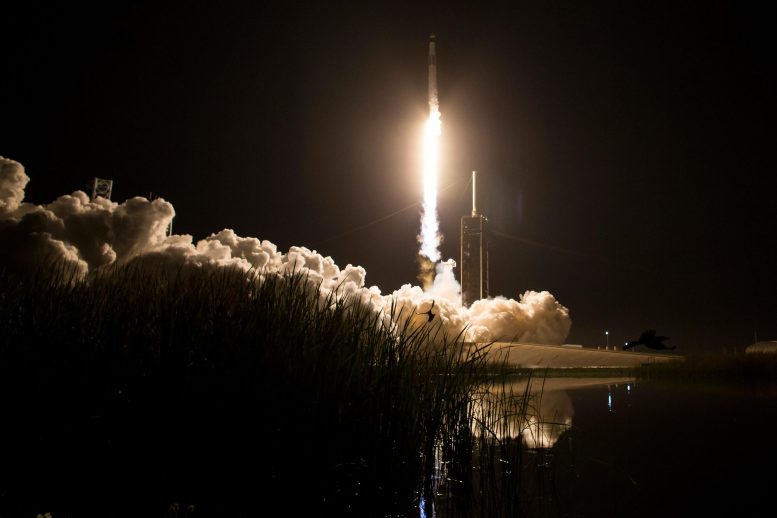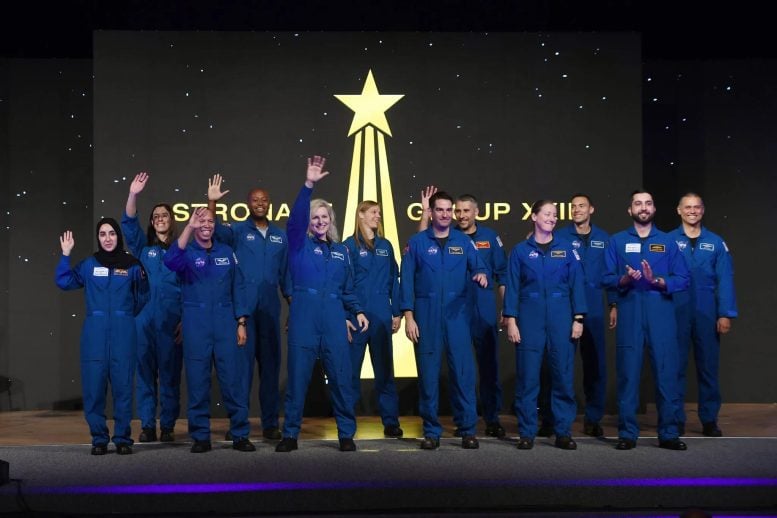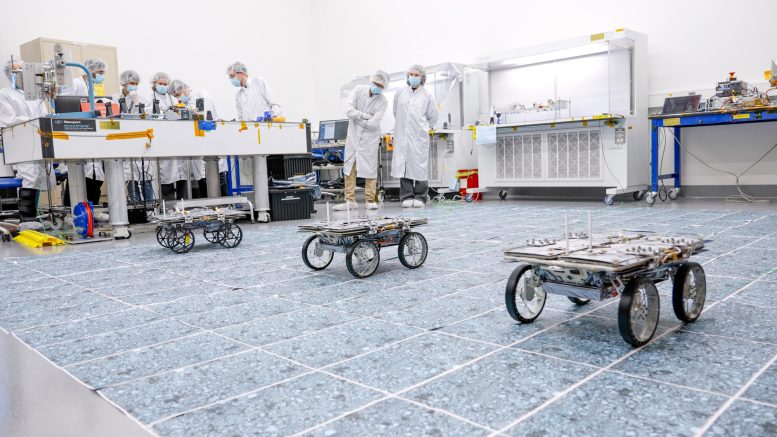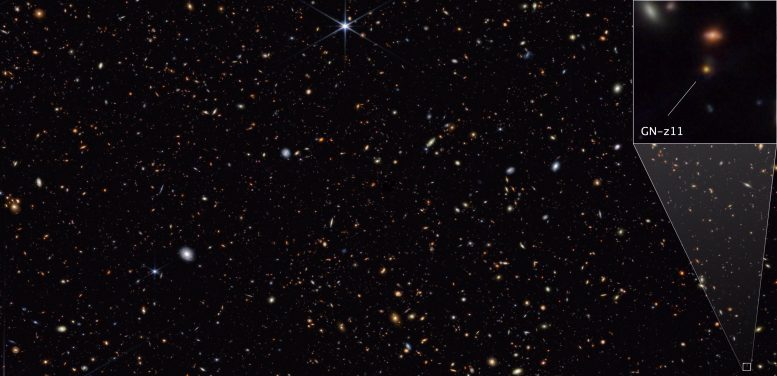
A New Crew Launches to the Space Station, Astronaut Graduation, Mini Moon Rovers
-
by Anoop Singh
- 10

A SpaceX Falcon 9 rocket carrying the company’s Dragon spacecraft is launched on NASA’s SpaceX Crew-8 mission to the International Space Station with NASA astronauts Matthew Dominick, Michael Barratt, and Jeanette Epps, and Roscosmos cosmonaut Alexander Grebenkin onboard, Sunday, March 3, 2024, at NASA’s Kennedy Space Center in Florida. Credit: NASA/Aubrey Gemignani
A new crew launches to the space station…
Graduating a new class of Artemis astronauts…
And a group of tiny lunar-roving robots are ready to roll…
A few of the stories to tell you about – This Week at NASA!
SpaceX Crew-8 Mission Launches to the Space Station
On March 3, NASA’s SpaceX Crew-8 mission launched to the International Space Station from NASA’s Kennedy Space Center. Two days later, the crew, including NASA astronauts Matthew Dominick, Michael Barratt, and Jeanette Epps, safely arrived at the station.
They will spend several months conducting scientific research aboard the orbital laboratory to prepare for human exploration beyond low Earth orbit and to benefit humanity on Earth.

NASA newest class of astronauts, selected in 2021, graduate during a ceremony on March 5, 2024, at the at the agency’s Johnson Space Center in Houston. Credit: NASA
New Class of Artemis Generation Astronauts Graduates
On March 5, NASA held a ceremony at their Johnson Space Center to graduate a new class of Artemis generation astronaut candidates.
After completing more than two years of basic training, the astronaut graduates earned their wings and are eligible for spaceflight, including assignments to the International Space Station, future commercial destinations, missions to the Moon, and eventually, missions to Mars.
NASA is accepting applications for their next class of astronaut candidates. Find out more.

Part of NASA’s CADRE technology demonstration, three small rovers that will explore the Moon together show off their ability to drive as a team autonomously – without explicit commands from engineers – during a test in a clean room at the agency’s Jet Propulsion Laboratory in December 2023. Credit: NASA/JPL-Caltech
Network of Small Moon-Bound Rovers Ready to Roll
Engineers at NASA’s Jet Propulsion Laboratory are done assembling and rigorously testing three small robotic rovers that are slated to be delivered to the Moon by an Intuitive Machines Nova-C lander on a future mission.
Part of NASA’s Cooperative Autonomous Distributed Robotic Exploration, or CADRE technology demonstration, the solar-powered rovers will work together to autonomously explore and map the Moon’s surface. The goal is to show that a group of robotic spacecraft can accomplish tasks and record data as a team, without explicit commands from mission controllers on Earth.

This image from Webb’s NIRCam (Near-Infrared Camera) instrument shows a portion of the GOODS-North field of galaxies. At lower right, a pullout highlights the galaxy GN-z11, which is seen at a time just 430 million years after the Big Bang. The image reveals an extended component, tracing the GN-z11 host galaxy, and a central source whose colors are consistent with those of an accretion disk surrounding a black hole. Credit: NASA, ESA, CSA, STScI, Brant Robertson (UC Santa Cruz), Ben Johnson (CfA), Sandro Tacchella (Cambridge), Marcia Rieke (University of Arizona), Daniel Eisenstein (CfA)
Farthest Active Supermassive Black Hole Ever Seen
NASA’s James Webb Space Telescope has helped find the first clear evidence that the galaxy GN-z11 – one of the brightest, youngest, and most distant galaxies ever observed – is hosting a central, supermassive black hole that is rapidly accreting matter.
The finding makes this the farthest active supermassive black hole spotted to date. The galaxy, which was initially detected by NASA’s Hubble Space Telescope, existed when the universe was only about 430 million years old.
That’s what’s up this week @NASA.
A SpaceX Falcon 9 rocket carrying the company’s Dragon spacecraft is launched on NASA’s SpaceX Crew-8 mission to the International Space Station with NASA astronauts Matthew Dominick, Michael Barratt, and Jeanette Epps, and Roscosmos cosmonaut Alexander Grebenkin onboard, Sunday, March 3, 2024, at NASA’s Kennedy Space Center in Florida. Credit: NASA/Aubrey Gemignani A new crew…
A SpaceX Falcon 9 rocket carrying the company’s Dragon spacecraft is launched on NASA’s SpaceX Crew-8 mission to the International Space Station with NASA astronauts Matthew Dominick, Michael Barratt, and Jeanette Epps, and Roscosmos cosmonaut Alexander Grebenkin onboard, Sunday, March 3, 2024, at NASA’s Kennedy Space Center in Florida. Credit: NASA/Aubrey Gemignani A new crew…
